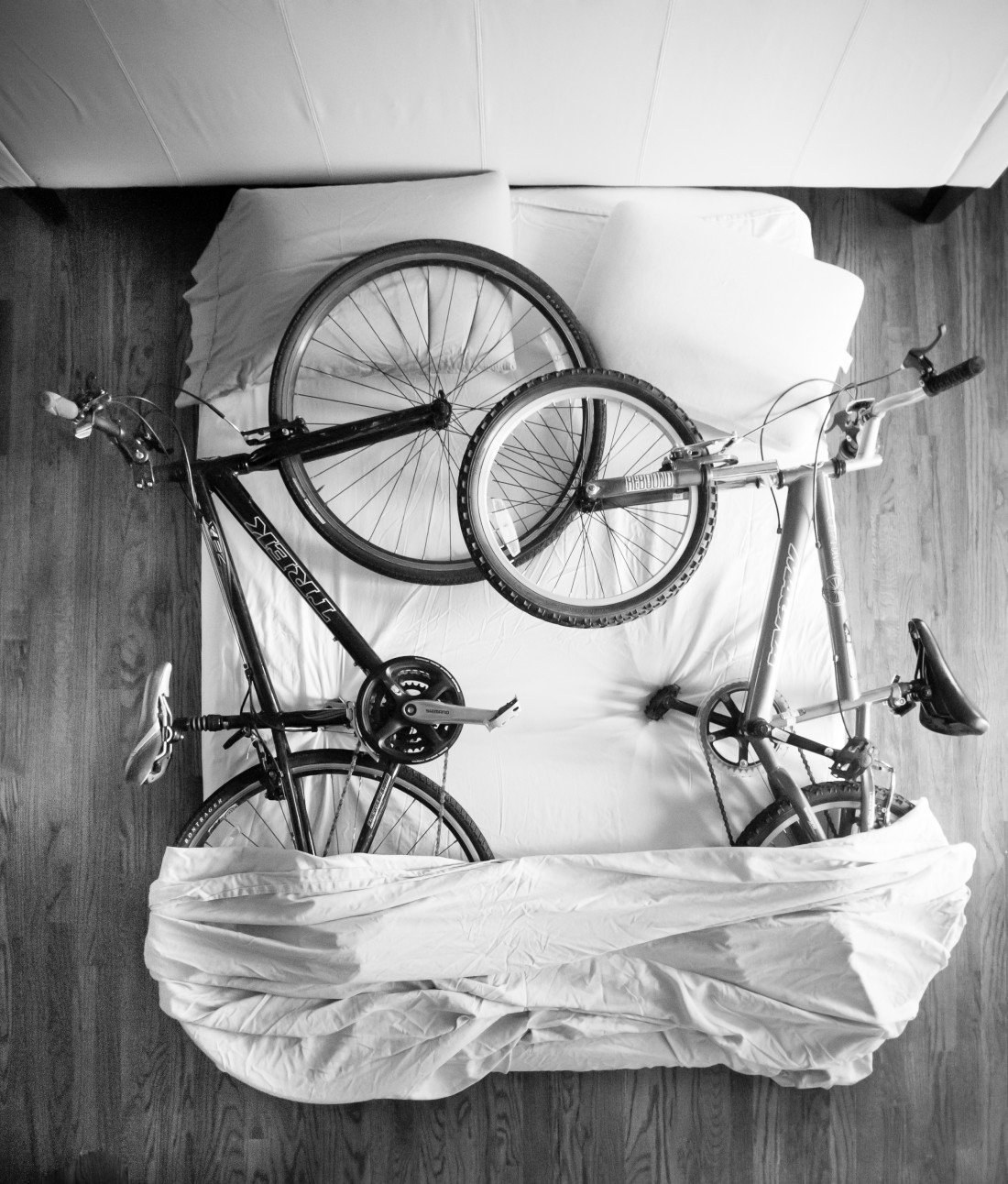May flowers are here, bringing National Bike Month along for the ride. In anticipation of future tourists on bikes, a coalition of organizations in the western counties gave them a boost by supporting a new study by Kostelec Planning. The study explores ways to go beyond traditional tourism-enhancement strategies — “putting butts (or heads) in beds,” as the study puts it — and offers ways to attract more pedal-powered visitors.
The study, titled “Bikes in Beds: How to Maximize Bicycle Tourism in Haywood County and Western North Carolina,” was produced at the request of organizations serving Western North Carolina’s seven westernmost counties.
Why develop bicycle tourism?
“One of the major things I took away from conducting the research for Bikes in Beds,” notes the study’s author Don Kostelec, “was how much of an impact cycling tourism already has on the economy of Western North Carolina.” The study credits bicycle tourism with a $14 million estimated annual economic impact in the region.
“Bikes in Beds helps make the case that bicycle tourism is a cutting-edge direction to go with economic development,” Kostelec says. It cites an Outdoor Foundation report showing that in 2013 about 91.5 million Americans engaged in some cycling, which makes the sport more popular than hiking, canoeing, kayaking and golfing combined. Bicycling for pleasure has been on the rise for some time, Kostelec notes, while fishing and golfing are declining in popularity.
With North Carolina’s westernmost counties looking at ways to attract new tourists, Kostelec says, there are several advantages to investing in the promotion of bicycle-related tourism over investment in other tourist activities. For instance, the average stay in an area for a bike tourist is 3.7 nights, which can generate more spending on amenities than the average tourist, who stays 2.5 nights, according to the study. Supporting that argument, the study cites an Oregon report showing that people traveling for bicycle-related reasons spent more and had higher incomes than the average tourist in the state.
Another reason for favoring investment in bicycle tourism, according to the study, is the high rate of job-creation for non-motorized transportation facilities. The statistics from the American Association of State Highway and Transportation Officials show that work on greenways, sidewalks and bicycle facilities, on average, creates the most jobs — 17 jobs per $1 million spent, generating 4.5 more jobs than the next-most productive categories, new highway construction and pavement widening.
Momentum
Much of Haywood County’s bicycle tourism centers around events. The Blue Ridge Breakaway and the Lake Logan Triathlon already bring about 1,700 participants plus their companions to the county each year. Such rides are due in part to the combined efforts of Bicycle Haywood NC (a chapter of the Blue Ridge Bicycle Club), the Haywood County Tourism Development Authority and the Haywood County Chamber of Commerce.
The groups also helped gain county approval for the 2011 Haywood County Comprehensive Bicycle Plan (HCCBP), an initiative that establishes five sets of goals for all civic bicycling programs: “Build bicycle infrastructure and other improvements; develop support facilities and programs; increase educational opportunities; provide information to residents and visitors; support policy change and economic development.”
Some of the HCCBP’s recommendations have been implemented thus far, according to Cecil Yount, vice-chair and former chairperson of Bicycle Haywood NC. “The town of Waynesville put ‘sharrows’ [share the road arrows] on around five miles of major bicycle routes from the plan.” The town is expected to install bike racks soon, he adds. Bicycle Haywood NC is seeking to fulfill other parts of the plan in partnership with the Haywood County Tourism Development Authority. Together, the two groups published a guide brochure with several ride routes for visitors. The guide is being updated.
Earlier this year, North Carolina Amateur Sports announced that Waynesville would be the starting point of this September’s Cycle North Carolina Mountains to Coast ride. The event provides Haywood and other counties an opportunity to promote regional cycling for a large number of serious riders, Kostelec notes. To prepare for the needs of an ongoing influx of event riders, one of his recommendations is to hold workshops educating hospitality-industry representatives on the needs of people traveling on or with bicycles.
Yount concurs. “When people come here to ride, we want them to get a good first impression and leave with a good taste in their mouths.”





Being an avid cyclist, I moved to Asheville with much anticipation of all the great cycling to be had in a city that boasts so much other outdoor recreation. Don’t get me wrong, the mountain biking here is unparalleled. But when I explained to the sales person at the local bike shop that road cycling here was really, really lacking, he looked at me in total disbelief. No dedicated bike lanes and many aggressive, impatient drivers make for a dangerous ride for cyclists. Not to mention most roadways lack any shoulder and even sidewalks are nonexistant-(I also enjoy walking from point A to point B too but no sidewalks-huh???) Many cities make bike travel and commuting much easier and safer. Asheville can do better and this issue impacts the city planners much more that they know.
Biking, along with all of the other outdoor recreational activities we have to offer in WNC must be viewed not only in environmental conservation terms, but also in Economic Development terms. High Quality of Life attracts Clean – High Paying Jobs !! This is a Regional opportunity!
Mr Edney is right. The outdoor recreation industry needs to be nurtured and cultivated in WNC. It will only continue to grow, however, the rate at which it grows will depend on how much the local economies choose to support and celebrate it.